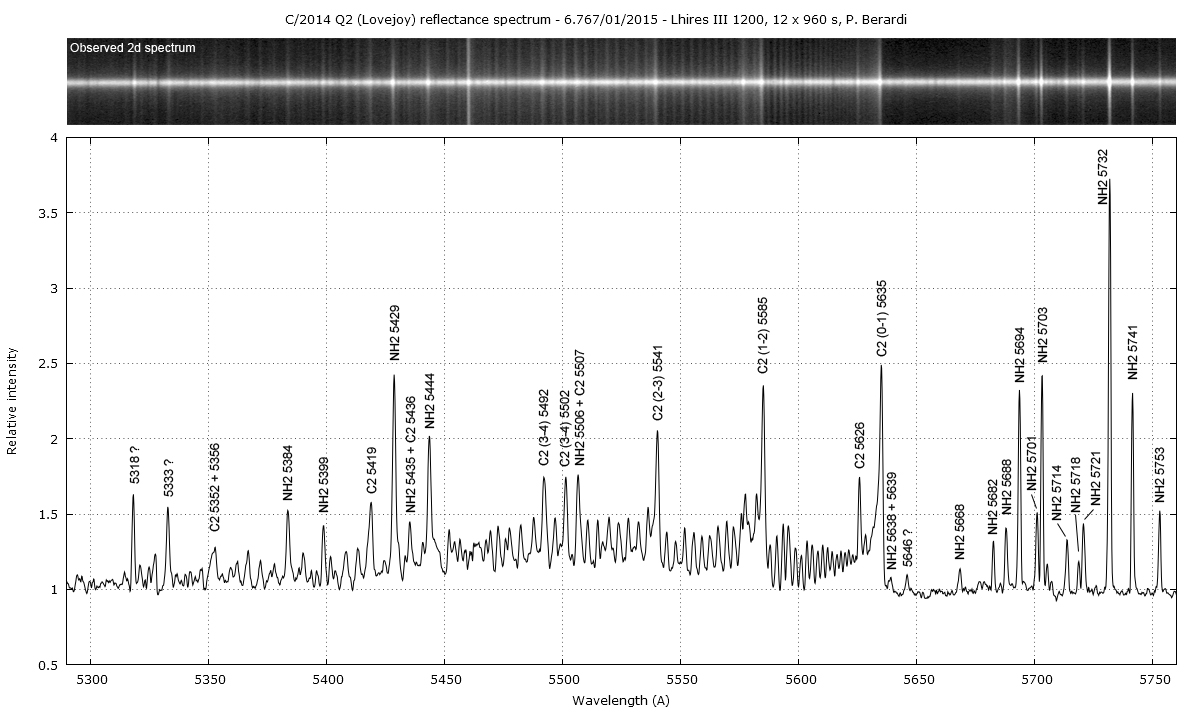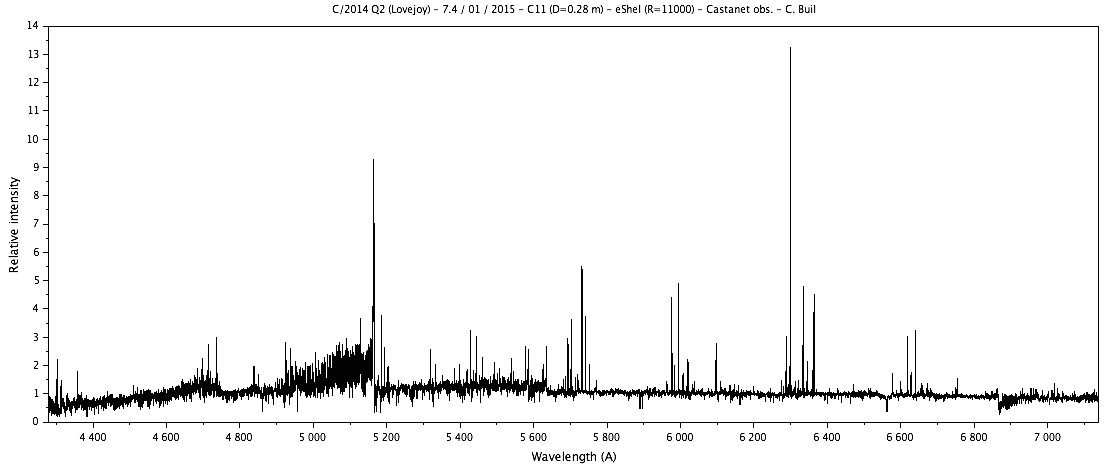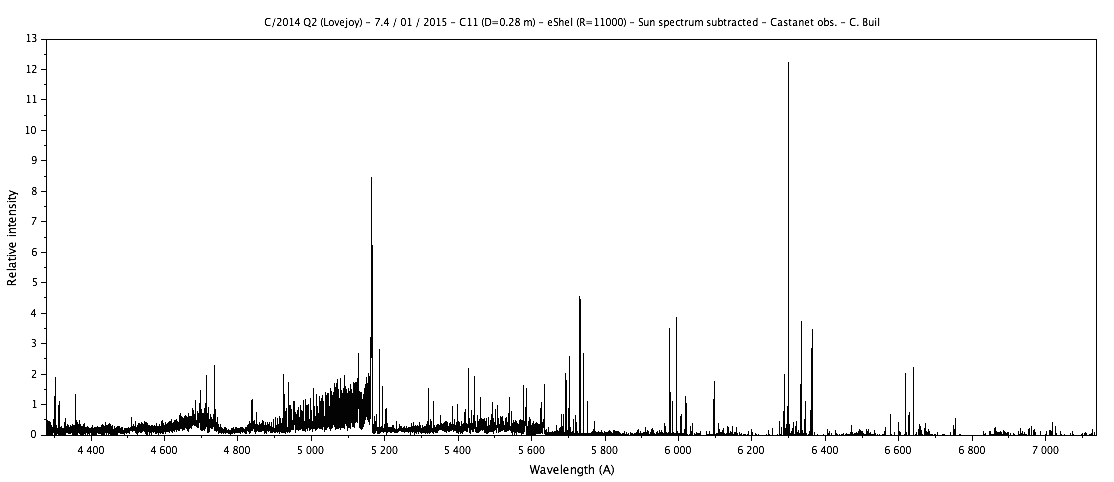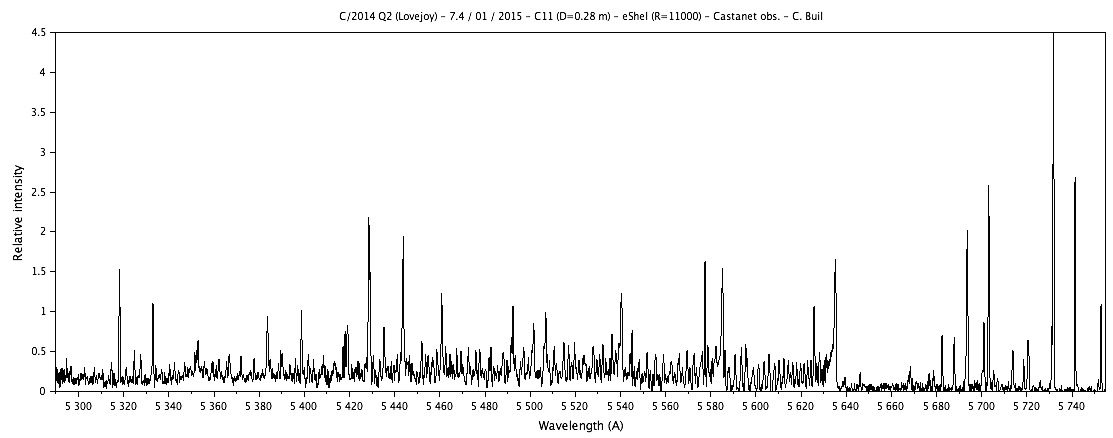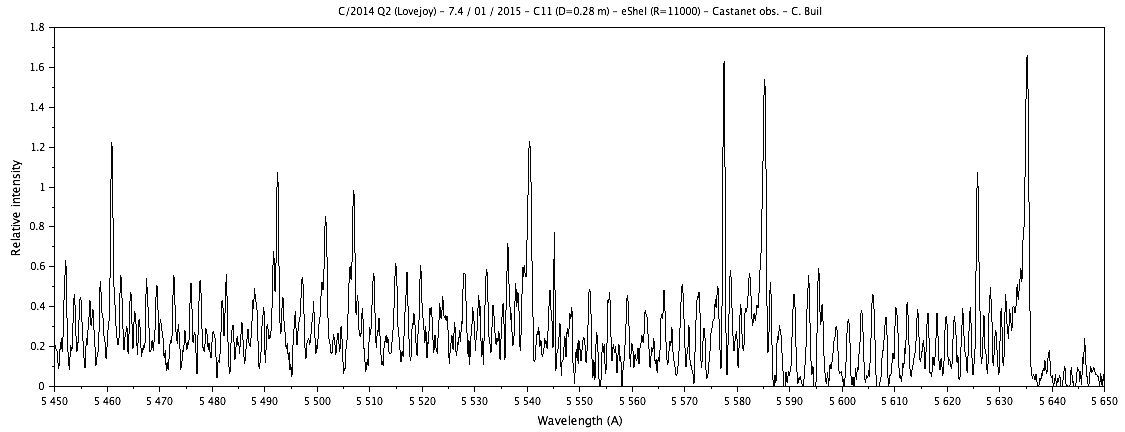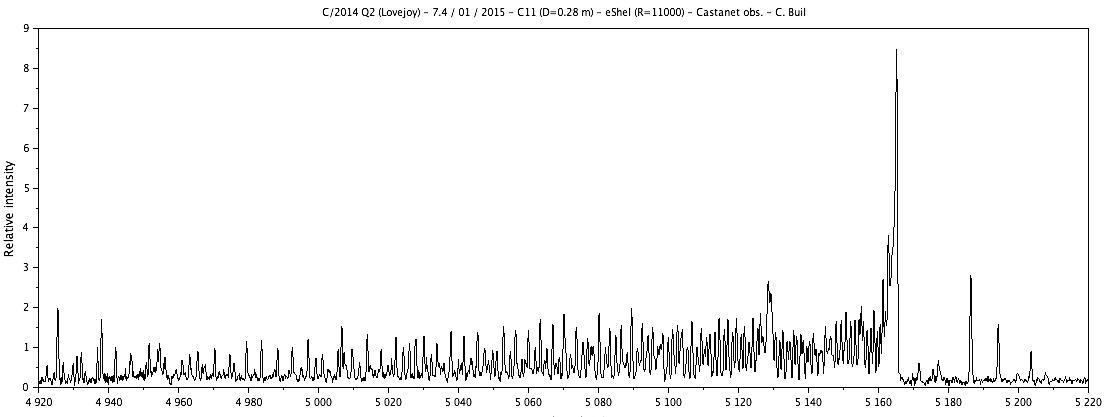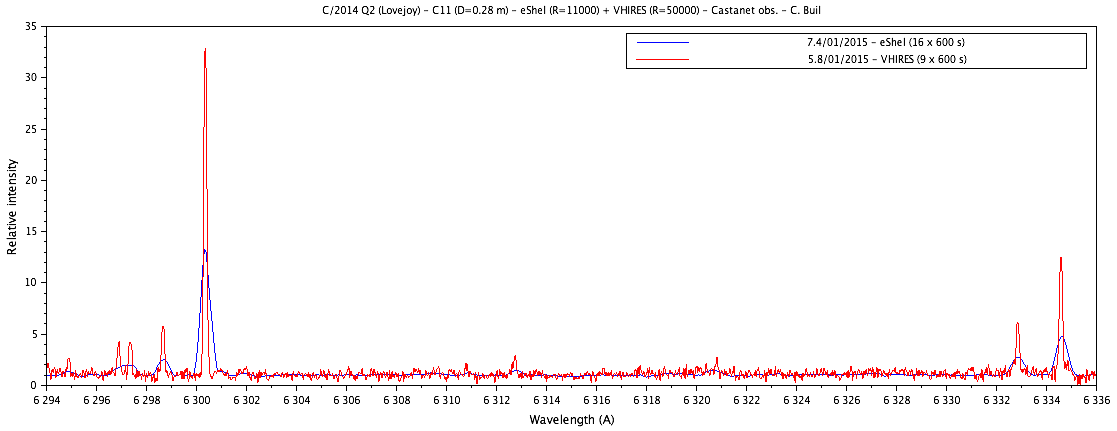Ciao Paolo:Paolo Berardi wrote:Hi Joan, François and all,
yes, we should observe it... but weather must agree!
François, thank you for documents about comets. I see your topic just now, when I wrote my post. Asap I'll read them with interest. I hope to find other information about spectral lines.
Yesterday I observed the comet with Lhires III 1200. The R~5000 profile includes wavelengths from 5285 to 5765A. I'd like to arrange a larger interval with several observations (weather permitting).
In the same observing session I took separate spectra for sky background and solar light (the Moon spectrum), then a reference star for general response.
False nucleus region and close coma (reflectance spectrum):
I put some labels for strongest lines (I hope they are ok). It is not easy for me to identify faint lines due to the density of the emissions in some of bands. Also difficult to understand which emission lines are the continuation of these bands. I could not identify three lines at about 5318A, 5333A and 5646A. If you can find something about, please let me know. In a 2005 paper (Frozen Hydrocarbon Particles of Cometary Halos as Carriers of Unidentified Emissions, Irakli Simonia) I found a 5318A wavelength coincidence with a Chrysene molecule C18H12 but I don't know if it is effectively in relation.
Some intermediate steps during data reduction:
Observed spectrum:
Sky background spectrum:
Observed - sky background:
Moon spectrum:
Reflectance spectrum (observed sky removed / Moon):
Paolo
Congratulations !!
As expected of you, a very good job !! Do you know how to make the very LHIRES-III.
Due to the inversion, there is a persistent fog in the valley of the Ebro river, also affects Sta. Maria M.
For three nights I can not observe and fog persists ...
Saluti tanti, Joan.
Jo sóc en Charlie.
